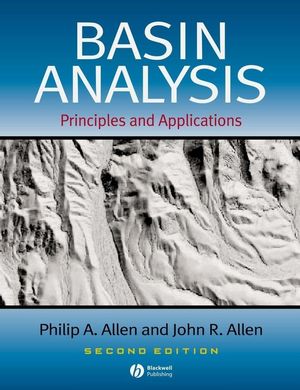Basin Analysis: Principles and Applications, 2nd EditionISBN: 978-0-632-05207-3
Paperback
560 pages
February 2005, Wiley-Blackwell
 This title is out-of-print and not currently available for purchase from this site.
|
Chapter 1 Basins in their plate tectonic environment.
Summary.
1.1 Compositional zonation of the Earth.
1.2 Rheological zonation of the Earth.
1.3 Plate motion.
1.4 Classification schemes of sedimentary basins.
Chapter 2 The physical state of the lithosphere.
Summary.
2.1 Stress and strain.
2.2 Heat flow: conduction and convection.
2.3 Gravity and isostasy.
2.4 Rock rheology.
PART 2: THE MECHANICS OF SEDIMENTARY BASIN FORMATION:.
Chapter 3 Basins due to lithospheric stretching.
Summary.
3.1 Introduction to rifts, failed rifts and passive continental margins.
3.2 Geological and geophysical observations in regions of continental extension.
3.3 Introduction to models of continental extension.
3.4 Uniform stretching of the continental lithosphere.
3.5 Modifications to the uniform stretching model.
3.6 A dynamical approach to lithospheric extension.
3.7 Mantle plumes and igneous activity associated with continental extension.
3.8 Estimation of the stretch factor and strain rate history.
Chapter 4 Basins due to flexure.
Summary.
4.1 Basic observations in regions of lithospheric flexure.
4.2 Flexure of the lithosphere: geometry of the deflection.
4.3 Flexural rigidity of the oceanic and continental lithosphere.
4.4 Lithospheric buckling.
4.5 The dynamics of orogenic wedges.
4.6 The modelling of foreland basins.
Chapter 5 Effects of mantle dynamics.
Summary.
5.1 Fundamentals and observations.
5.2 Dynamic topography.
Chapter 6 Basins associated with strike-slip deformation.
Summary.
6.1 Overview.
6.2 The structural pattern of strike-slip fault systems.
6.3 Basins in strike-slip zones.
PART 3 THE SEDIMENTARY BASIN-FILL:.
Chapter 7 The sediment routing system.
Summary.
7.1 Introduction.
7.2 Weathering.
7.3 Terrestrial sediment and solute yields.
7.4 Measurements of erosion rates.
7.5 The functioning of sediment routing systems.
Chapter 8 Basin stratigraphy.
Summary.
8.1 A primer on process stratigraphy.
8.2 Stratigraphic cycles: definition and recognition.
8.3 Driving mechanisms for stratigraphic patterns.
8.4 Numerical simulation of stratigraphy.
8.5 Depositional systems.
8.6 Relation of depositional style to basin setting.
Chapter 9 Subsidence and thermal history.
Summary.
9.1 Introduction to ‘geohistory analysis’.
9.2 Porosity loss during basin subsidence.
9.3 Subsidence history and backstripping.
9.4 Introduction to thermal history.
9.5 Theory: the Arrhenius equation and maturation indices.
9.6 Factors influencing temperatures and palaeotemperatures in sedimentary basins.
9.7 Measurements of thermal maturity in sedimentary basins.
9.8 Application of thermal maturity measurements.
9.9 Geothermal and palaeogeothermal signatures of basin types.
PART 4 APPLICATION TO PETROLEUM PLAY ASSESSMENT:.
Chapter 10 The petroleum play.
Summary.
10.1 From basin analysis to play concept.
10.2 The petroleum system and play concept.
10.3 The petroleum charge system.
10.4 The reservoir.
10.5 The regional topseal.
10.6 The trap.
References.
Index



